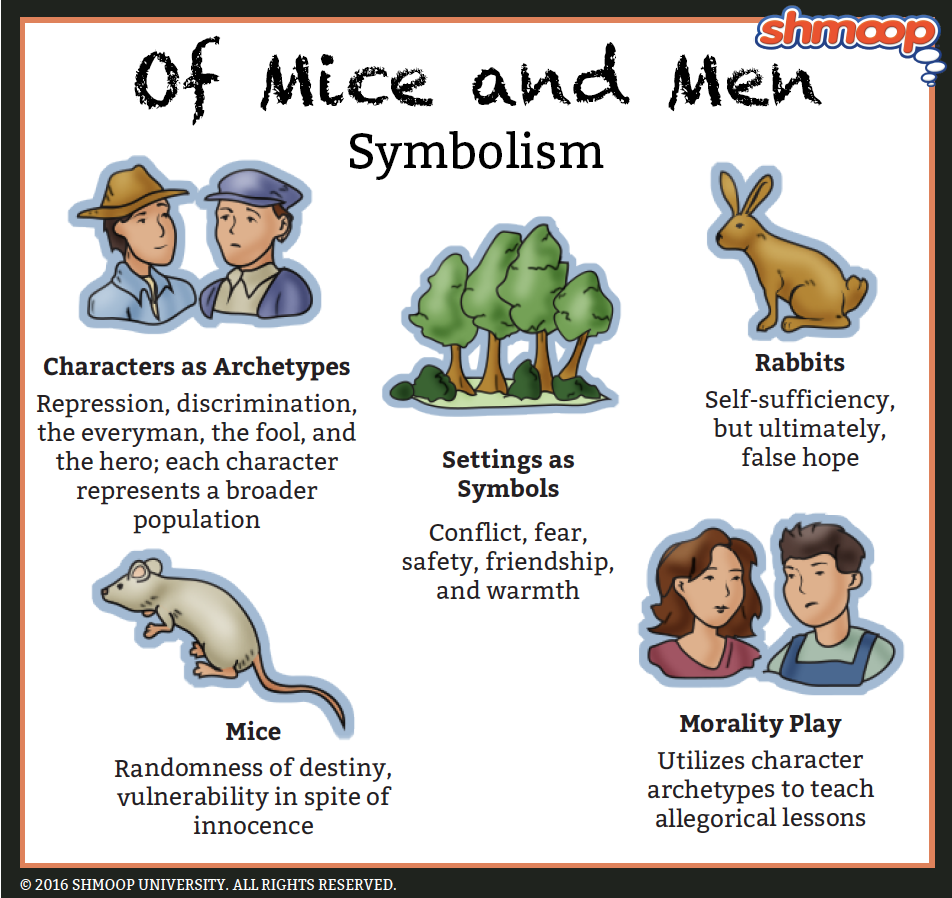Symbolism, Imagery, Allegory

(Click the symbolism infographic to download.)
When George first tells the story of the dream farm, it's because Lennie's desperate for him to "Tell about what we're gonna have in the garden and about the rabbits in the cages and about the rain in the winter and the stove" (1). For George, the farm may symbolize freedom and happiness, but for Lennie, it is simply access to soft things—which is a freedom and happiness of its own.
Unfortunately, we know that the rabbits are just going to die. (Even George is mostly interested in killing and eating them.) They may be emblematic of a simple and idyllic life, but they're a fraught symbol: we know Lennie is excited about them because they'll be furry and lovely to pet, but we also know that Lennie tends to hurt whatever he pets.
Lennie knows it too. At the end of the story, he hallucinates a "gigantic rabbit" that tells him he "ain't fit to lick the boots of no rabbit. You'd forget 'em and let 'em go hungry" (6). And he says this all in Lennie's voice. This enormous, angry rabbit suggests that Lennie realizes deep down that he'll never have his dream. Come to think of it, neither do we. For all the talk about rabbits, the only one that appears in the book is this giant, hallucinatory one. Like the Easter bunny, these rabbits—and the self-sufficiency they represent—are nothing but a child's fantasy.
Oops, did we just spoil it for you?